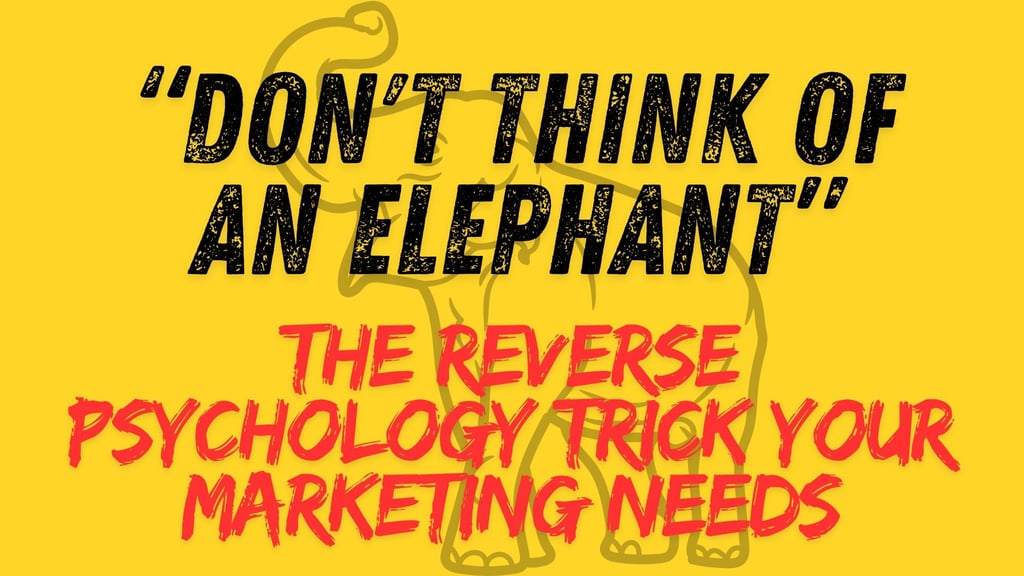Don't Think of an Elephant: The Reverse Psychology Trick Your Marketing Needs


Have you ever been told not to think about something, only to have it consume your mind completely? That’s the brilliance of the "Don’t Think of an Elephant" strategy in marketing. It’s a clever reverse psychology tactic that grabs attention, sparks curiosity, and drives action.
Why Does This Strategy Work?
Psychological Reactance: People naturally resist being told what to do—or not do—and this creates an irresistible urge to take the forbidden action.
Curiosity & FOMO: Saying “don’t” makes people wonder what they’re missing. It's human nature!
Challenge Accepted: No one likes to back down from a dare. Statements like “You can’t do this” often motivate people to prove otherwise.
Emotional Connection: It’s playful, unexpected, and engaging, which helps brands build stronger emotional ties with their audience.
Differentiation: This approach helps you stand out in a crowded marketplace with a message that disrupts the norm.
How to Use the 'Don’t Think of an Elephant' Strategy
"Don’t Click This" Ads: Create curiosity-driven ads with a simple message:
-“Don’t click this link!” That’s all it takes to intrigue people.
Playful Disclaimers: Use humorous warnings that nudge your audience toward curiosity:
-“Don’t bother reading this blog unless you love saving money.”
-“This webinar isn’t for you—unless you’re into crushing your sales goals.”
-“Stop here! The free guide might make your competitors jealous.”
Rebellious Challenges: Call out your audience with reverse challenges:
-“You probably can’t master this skill in just 7 days.”
- “Our app might be too simple for tech-savvy pros like you.”
Exclusive Invitations: Suggest that only a select group is “allowed” to participate, creating exclusivity:
-“This offer isn’t for everyone—only the boldest marketers will dare to click.”
Real-World Success Stories
A Nonprofit Campaign Goes Viral: A wildlife conservation organization used this strategy with the tagline “Don’t Donate to Save the Elephants” on their donation page. Visitors were drawn to click, only to be met with a heartfelt story about the urgent need for donations. The result? A 3x increase in contributions compared to their traditional campaigns.
Netflix’s Cheeky Emails: Netflix sent out an email with the subject line “Don’t Open This Email”. Naturally, subscribers couldn’t resist. Inside was an irresistible offer to explore new features, boosting user engagement and reducing churn rates.
An event company saw a 5x spike in event registrations after tweeting, "Don't sign up for this event."
Tips for Success
Always Provide Value: Once your audience takes the bait, make sure what they find is worth their time and attention.
Be Strategic: Use this approach sparingly to maintain its impact. Save it for campaigns that truly need to stand out.
Keep It Playful: The tone matters. Humor and curiosity are the secret ingredients to making this strategy work.
🔔 Follow for More: Don't miss out on future articles packed with practical tips and inspiring ideas.
Visit my website Kamaleonte Marketing.
Subscribe to my newsletter AI Sapiens.
Stay informed, stay adaptable, and keep thriving!
